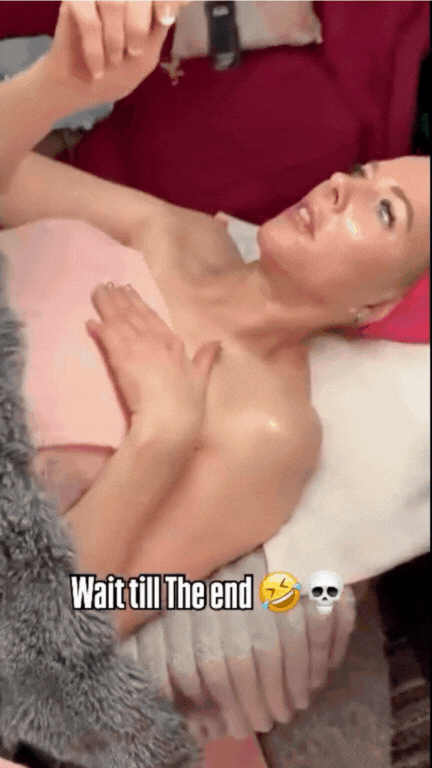Aromatherapy oil course
Aromatherapy oil course
4 Easy, Interest-Free Instalments
Choose your favourite payment method at checkout:
✅ Zip ✅ Afterpay ✅ Klarna ✅ Humm ✅ PayPal
✅ Payment methods available at checkout. Payment plans only work for Australia.
Interested in the healing power of plants?
- In an oil burner or diffuser
- In steam inhalations
- In bath water
- On a tissues or similar to inhale
- Mixed in oil or lotion and applied therapeutically to the body
What you can expect in the course:
- Plant Classification
- Understand the classification system
- Plant names and plant phyta
- Be able to identify the family, genus and species names of plants
- Pronunciation of latin names
- Chemistry of herbs and chemical compounds
- Acids, bases and tannins
- Introduction to Aromatherapy
- Origins of aromatherapy
- Define aromatherapy and its history
- Top notes and middle notes
- Natural chemicals in plants
- Essential Oils
- Benzoin - Styrax benzoin
- Bergamot - Citrus bergamia
- Cedarwood - Cedrus atlantica
- Chamomile, Roman - Anthemis nobilis
- Chamomile, German - Matricaria Chamomilla
- Clary Sage - Salvia sclarea
- Eucalyptus - Eucalyptus globulus
- Frankincense - Boswellia carterii
- Geranium - Pelargonium graveolens
- Juniper - Juniperus communis
- Lemon - Citrus limon
- Lavender - Lavandula angustifolia
- Sweet Marjoram - Origanum majorana
- Orange, Bitter - Citrus arantium amara
- Orange, Sweet - Citrus arantium sinensis
- Peppermint - Mentha piperita
- Rose Otto - Rosa centifolia
- Rosemary - Rosmarinus officinalis
- Sandalwood - Santalum album
- Tea Tree - Melaleuca alternifolia
- Sweet Thyme - Thymus vulgaris
- Ylang Ylang - cananga odorata
- Australian Bush Remedies
- Safe Use of Essential Oils
- How essential oils work
- Inhalation
- Absorption
- Quantities to use
- Blending
- Children
- During pregnancy
- For animals
- Carriers
- Using carriers
- Sweet Almond oil
- Apricot Kernel oil
- Avocado oil
- Canola oil
- Oil burners
- Carrier oils, creams and lotions
- Growing and Harvesting Herbs for Essential Oil
- Cultivation of herbs
- Traditional plant row spacings
- Storage of plant parts used for vegetative propagation
- Harvesting material for medicinal use
- Harvest of selected herbs
- Expected yields of selected herbs
- Harvesting herbs for essential oils
- Post harvest handling of herbs
- Post harvest preservation
- Methods of Extraction
- Introduction
- Water Distillation
- Steam Distillation
- Maceration
- Effleurage
- Expression
- Fixatives
- Herbal Preparations
- Preparing Teas, Rinses and Baths
- Preparations using different herbs
- Decoction
- Hazardous Herbs and Oils
- Introduction
- Carcinogens
- Photosensitisers
- Allergens
- Hormone Like Affects
- Teratogens
- Cellular Respiratory Inhibitors
- Cathartics
- Abortifacients and Irritants
- Alkaloids; types
- Toxic Amino Acids
- Glycocides
- Terpenes
- Plant Acids
- Poly-ynes
- Furanocoumarins
- Proteins
Each lesson culminates in an assignment which is submitted to the school, marked by the school's tutors and returned to you with any relevant suggestions, comments, and if necessary, extra reading.
Aims
- To develop a basic understanding of the safe use of aromatherapy oils and their production.
- Describe the classification system used for naming plants and to be able to identify the family, genus and species names of plants used to produce essential oils.
- To define aromatherapy and its history and to understand how aromatherapy works, and the basic chemistry behind it.
- Identify a range of essential oils and their uses.
- Ensure that essential oils are used in a safe and controlled manner.
- Identify what can be used as a carrier for essential oils and why they must be used.
- Describe methods which can be used to grow, and harvest herbs used in essential oil production.
- Describe methods used to extract essential oils from plants.
- Identify herbs and oils acknowledged as hazardous to people, and which should not be used in aromatherapy, or with great care.
What You Will Do
- Undertake brief written report on what you understand about how plants are named.
- Give the scientific names of ten different plants from which essential oils are derived.
- Give a brief summary of your knowledge of aromatherapy and essential oils.
- Understand how herbs are promoted to the public in order to sell them.
- Write an essay on the history of aromatherapy and essential oil use.
- Suggest different blends that can be used for a number of complaints.
- Discuss a range of oils that would be suitable for a travel kit.
- Demonstrate your understanding of a range of oils that would be considered safe to use for children.
- Write a short essay on ways in which essential oils can be used.
- List a range of types of vegetable oils appropriate for use in massage and indicate what types of skin the oils are good for.
- Explain how oils enter the body and how a carrier will assist with this entry.
- Submit the bath oil blends from a Set Task along with instructions on how to use them in the bath and what conditions they are good for.
- Demonstrate your understanding why some herbs tend to be collected in the morning, some before flowering, some during flowering, and others at various times of the year and what impact does this have on the essential oil?
- From catalogues collected, explain why some oils cost more others.
- Discuss different methods of oil extraction and list their benefits and disadvantages.
- Comprehend what is the difference between an essential oil and an aromatic oil.
- Compile a detailed costing for processing herb materials to produce essential oils.
- List a range of essential oils that are not safe for use in aromatherapy.
- Discuss how essential oils can be used safely and ways in which they should not be used.
- Understand which essential oils may not be safe for use during pregnancy.
Let customers speak for us
Couldn't load pickup availability
Your payment information is processed securely. We do not store credit card details nor have access to your credit card information.

Selling transformations
Clients need you and we give you the tools to help you fix their skin, but also keep you booked.
Our students work

Glass facials

Glass facials

Glass facials

Glass facials

Glass facials

Glass facials


Glass facials

Glass facials


Glass facials

Glass facials


Glass facials

Glass facials

Glass facials





















